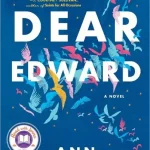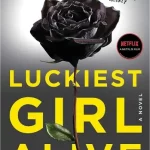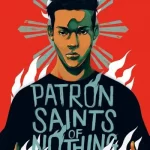
3 Sentence Summary
Gabrielle Zevin’s “Tomorrow, and Tomorrow, and Tomorrow” intricately weaves a tale spanning thirty years, delving into the intricate bond shared by Sam and Sadie. As they navigate the realm of video game creation, the novel beautifully unfolds themes of friendship, love, and the human quest for lasting significance.
Summary Read Time: Less than 7 minutes
Actual Book Length: 401
First Published in: 2022
Below is the detailed yet quick Tomorrow, And Tomorrow, And Tomorrow book summary:
Part 1
Sam Masur and Sadie Green are an unlikely duo who forge a deep connection over video games in a hospital’s game room back in 1987 Los Angeles. Sam, recovering from a tragic car crash, hasn’t spoken to anyone since the accident—that is, until Sadie walks in. What kicks off as community service for Sadie’s upcoming bat mitzvah quickly turns into a rock-solid friendship. They spend a joy-filled summer gaming, but hit a snag when Sam learns he’s Sadie’s “community service project.”
Years later, fate has them crossing paths at a train station. Sadie gifts Sam a floppy disk with a game prototype, and voila! An overnight gaming binge seals the deal: they’re destined to be game developers. Enter Ichigo, their debut game that turns out to be a smashing hit. Sadie’s artistic finesse pairs brilliantly with Sam’s pragmatic programming skills. They establish their own studio, Unfair Games, and navigate the slippery terrain of creative partnerships and commercial gains.
Despite their business success, it’s not all roses. Sam becomes the studio’s public face, triggering a new layer of tension. Both are grappling with personal issues: Sadie’s recurrent depression and Sam’s lingering physical disability. They fight, make up, collaborate, and find themselves tangled in a complex relationship—intensely platonic, refreshingly devoid of romantic clichés.
Part 2
Creative sparks fly between Sadie and Sam, but not always in the good way. Sadie dreams of avant-garde games while Sam’s eyes are on the commercial prize. They’re each pulled in different life directions too—Sadie by an unhealthy relationship and Sam by a life-altering surgery. Yet, love triumphs, leading them to relocate to Venice, California. Their gaming empire, Unfair Games, skyrockets, but so does a love triangle, as Sadie and their friend Marx become an item.
Sam’s world turns upside down learning about Sadie and Marx. Jealous and feeling sidelined, he goes through a personal rebranding, assuming the name Mazer and diving headlong into social activism through his games. Mapleworld, for instance, becomes a haven for same-sex marriage long before it’s universally accepted. Eventually, Sam comes to terms with Sadie and Marx’s relationship, and they launch a new blockbuster, “Master of Revels.”
Just when you think the story could use a ‘happily ever after,’ tragedy strikes. The socially progressive themes in their games draw the ire of extremists. An attack on their office ends in the heartbreaking loss of Marx, who dies protecting their dream and team. It’s a somber note, reminding us that even in the most creative and expansive worlds, reality often has the final say.
Part 3 – Tomorrow, and Tomorrow, and Tomorrow Book Ending
The aftermath of Marx’s tragic death sees Sam and Sadie navigating rocky emotional terrain. Struggling with grief and postnatal depression, Sadie isolates herself until Sam attempts a unique lifeline— a bespoke video game called “Pioneers.” The game rekindles a connection, albeit in the virtual world. But when Sadie discovers that Sam is the brains behind it, she feels deceived and severs ties, taking up a teaching position in Boston.
Fast forward five years: the pair reunites, each wearing the wisdom that comes from years of heartache and personal growth. They open up, airing long-held insecurities and misconceptions. Sam had assumed his ethnicity and disability were deal-breakers for Sadie; she sets him straight, emphasizing the rarity of their platonic bond.
The story wraps with an emblematic gesture: a new game concept from Sadie. This closing moment is more than nostalgia; it’s a symbol of the unique love and partnership that has withstood life’s highs and lows. What’s common is ordinary; what they share is extraordinary.





